Parts Of SpeechA part of speech or part-of-speech (short form as POS or PoS) is a subcategory of words (or, broadly, lexical objects) with comparable grammar qualities in classical grammar. Words designated to the same part of speech have equivalent syntactic behavior (they perform similar functions within the grammatical framework of sentences) and often similar morphology (they receive inflection for similar qualities). 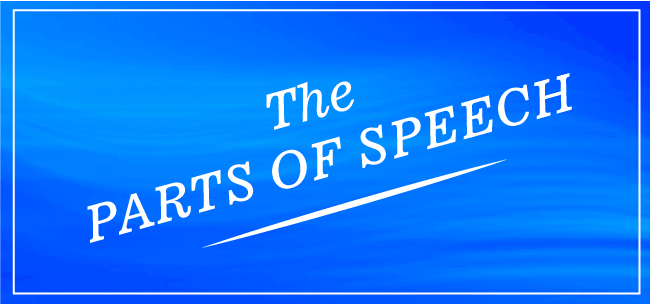
English parts of speech include noun, verb, adjective, adverb, pronoun, preposition, conjunction, interjection, numeral, article, and determiner. Every word is a part of the spoken language. The term "part of speech" relates to the task or purpose of a phrase or word in a sentence. Like any business or TV program with an ensemble cast, these positions were created to complement one another. Word class, lexical class, and lexical category are examples of terminology other than parts of speech that is used in contemporary linguistic categorisation, which frequently make more specific differences than the old form or concept. Some scholars limit the lexical word class to a specific form of syntactic classification or class; it is due to the fact in their view the word/phrase rule out those parts of speech that are deemed functioning, such as pronouns. The phrase form class is also used, albeit it has several contradictory definitions. There are two types of word classes: open and closed: Open classes (usually nouns, verbs, and adjectives) regularly gain new members, whereas closed classes (such as pronouns and conjunctions) get new members seldom, if at all. History Of Parts Of SpeechThe grouping of words into lexical categories may be traced back to the dawn of linguistics. India : Parts Of SpeechThe Sanskrit grammarian Yska identified four primary kinds of words in the Nirukta, published in the 5th or 6th century BCE: ??? nāma is a noun (including adjective) ?????? ākhyāta means "verb" in Sanskrit. ?????? upasarga - pre-verbs or a prefix ????? nipāta - particle; invariant word (most probably prepositions) These four were classified into two groups: inflectable (noun and verb) and uninflectable (pre-verb and particle). Tolkppiyam, a classical or pre-historic text on Tamil grammar thought to have been composed approx 2,500 years ago, categorizes Tamil terms as peyar (; noun), vinai (; verb), idai (part of speech that alters the connections among the verb and noun), and uri (a phrase that more qualifies a noun or verb) Western traditions : Parts Of SpeechPlato, writing a century or so after Yska's work, noted in his Cratylus dialogue, "sentences are, I believe, a blend of verb(s) [rhêma] and noun(s) [ónoma]." Aristotle brought a new class, "conjunctions" [sndesmos], that includes not just the phrases or word we know as conjunction nowadays, but also other forms (the interpretations varioes; in one elucidation, it is pronoun, preposition, and the article). By the end of the second century BCE, grammarians had enlarged this classification framework into eight categories, as evidenced in Dionysius Thrax's Art of Grammar. Noun (ónoma): a case-inflected part of speech denoting a physical or abstract entity. Verb (rhêma): a part of speech that lacks case inflection but is inflected for tenses, persons, and numbers, indicating an act or process that is undertaken or endured. Participle (metokh): a portion of the speech that shares characteristics with both the verb and the noun. The article (árthron) is a declinable component of speech that includes both the definite article and the basic relative pronoun. Pronoun (antnym): a part of speech that can be used in place of a noun and is designated for an individual. In compositions and syntax, a preposition (próthesis) is an element of speech that comes before other words. Adverb (eprrhma): a part of speech sans inflection, used to modify or supplement a verb, adjective, clause, sentence, or another adverb. Conjunction (sndesmos): a component of communication that connects the discourse and fills gaps in its interpretation. The mentioned parts of speech are characterized by morphology, syntact, and semantic basis or norm, as can be observed. The Latin grammarian Priscian (about 500 CE) amended the preceding eightfold system, removing "article" (because the Latin language, unlike Greek, lacks articles) while adding "interjection." Works of English grammar usually continue the trend of the European tradition described, except that participles are now generally viewed as types of verbs instead of as a different part of speech. Numerals are frequently conflated with some other parts of speech: nouns (cardinal numerals, e.g., "one," and collective numerals, e.g., "dozen"), adjectives (ordinal numerals, e.g., "first (multiplicative numerals, e.g., "once", and distributive numerals, e.g., "singly"). Typically, eight or nine parts of speech are mentioned: The Parts Of Speech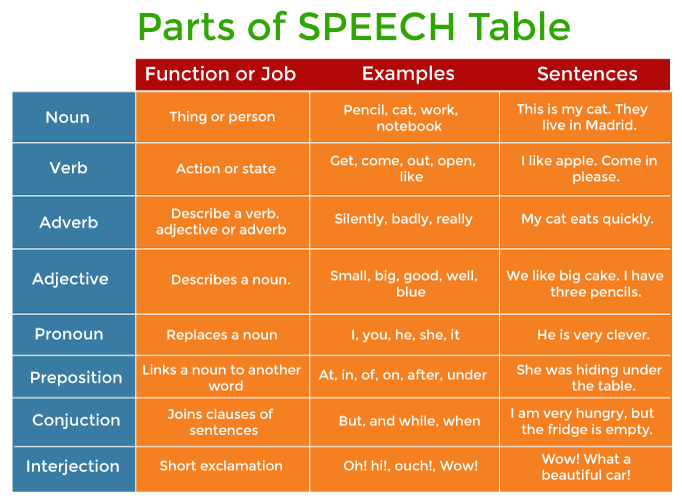
The English Grammar has majorly eight parts of speech: nouns, pronouns, verbs, adjectives, adverbs, prepositions, conjunctions, and interjections; and 9 parts if determiner/article is considered as a separate category. The part of speech defines how the word acts grammatically and in meaning inside the phrase. When utilised in distinctive areas or context, a single word can function as more than one component of speech. While seeing a dictionary, comprehending parts of speech is essential for searching the correct definition of a term or word. 9 or 8 Parts Of Speech- This is common QuestionThere is a common debate on the fact that there are eight or nine parts of speech. According to some experts, determiners (Articles) are not parts of speech, whereas some are very much a separate category and part of the entire concept. So keeping determiners/ articles category in the count, there are 9 Parts of Speech. 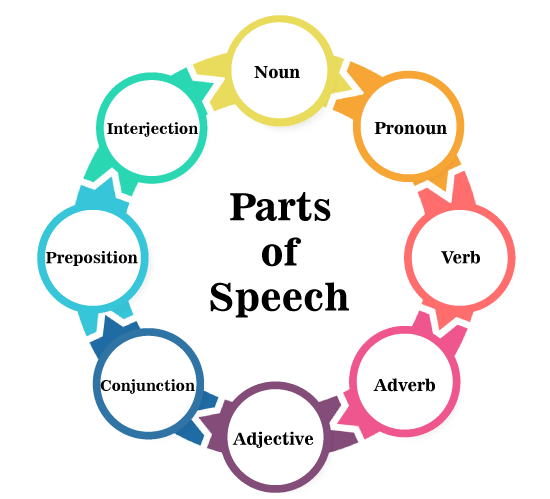
A noun (name)The first part of speech is a noun- Nouns are also categorized as count nouns or non-count nouns; some can fit into both categories. They are known as name words because they are the most common speech feature. A noun is a term that expresses or defines a person, location, idea, or thing. Essentially, anything that refers to a "thing" is a noun, whether it's a tennis court, California, Diana, or Shoes. Nouns are classified into two types: common nouns and proper nouns. Common nouns are generic names for objects such as planets and television shows. Proper nouns are unique names for distinct things, such as Saturn and Eureka! A noun, in easy understanding, is the name of the place, person, or any item or thing. These have crucial role and characteristics in sentences, from the subject usage to the object for a certain event or acts/ activities. Nouns are capitalized when they are the official heading or name of a thing, place, or a person, also in that condition, nouns are better referred as proper noun. The Pronoun (replace or swaps or places again)A pronoun is also known as a synonym for a noun or noun's phrase (them, he). Because they substitute nouns, pronouns form short, simple, and clearer sentences. Pronouns are terms used to replace certain nouns when the listener or reader understands which noun you are alluding to. Hence, in a sentence, pronouns are using for replacing the noun, and they are more generalized type of noun that particularly associate to human. "Jenny was meant to do this at seven," you might remark, then add, "she's usually slow; next time, I will ask her to come a half-hour sooner." So as seen above; you kept your statements grammatically correct by substituting she and her for Jenny's name four times in a row. There are various forms of pronoun like Personal Pronoun, Indefinite Pronoun, Relative Pronoun, and so on. Adjective (describes, characterizes, limits)The next part of speech in the list is an adjective. It is a noun or pronoun modifier (tiny, coward). Adjectives help to clarify the concept of another phrase (noun). Adjectives are words used to characterize nouns. Consider your favourite film. What would you tell a buddy who hasn't seen it? The movie can be defined or expressed as boring, super engaging, well-scripted, or annoying. You're utilizing adjectives when you describe the movie using all these words. An adjective can but does not have to come before the noun it describes (I have a brown cat). Adjectives are often seen at the end of a statement (my cat is brown). Adjectives are utilized to characterize noun and pronoun. They express or define which, how much, what type, and other details. Adjectives help the reading audience or the listening audience in utilizing their perceptions to see or imagine things in a better way. Verb (states activity or action or being)The verb refers to a word that refers to an action (walk), an incident (happen), or a state of being (be). A collection of words cannot be a phrase or sentence without a verb. Verbs are phrases or word of action that define what happens in a phrase. They can also express the emotion state of a sentence subject (is, was). The tense (present, past) and count distinctiveness that lead verbs to modified form (single or plural). Go! Be incredible! Move as quickly as you possibly can! Take the victory! Congratulate all those who worked hard and excelled! Go, Be, Move, congratulate are all verbs. Verbs are words that express certain acts, such as swimming, jogging, or being wonderful. However, not all the verb define or imply to literal activity or event. Nonaction verbs are those that allude to sentiments or states of being, such as to love and to be. On the other hand, action verbs relate to verbs that allude to literal activities. Adverb (describes, limits)An adverb is a modifier or change maker of an adjective, verb, or even other adverbs (very, quiet). Adverbs help to clarify language. These are words that characterize verbs, adjectives, and even other adverbs. The define in detailed of when, where, how, and why anything happened and also as the extent or frequency with which it happened. An adverb is a term that characterizes other adverbs, adjectives, or verbs. Have a look at the following examples. Here is an example for better understanding: I walked into the room silently. The word "quietly" refers to how you went or got into (verb) the room. Here is another: A cheetah always runs faster than Giraffe. Always implies to how often a cheetah is speedier (adjective) than a Giraffe. Preposition (relates/ corresponds or pertains)Another part of speech is Preposition, a term that connects words in a sentence or phrase and assists with syntactic context (in, of). Prepositions demonstrate the connection of nouns or pronouns to some other word in the sentence. Prepositions showcase that the spatial, chronology and role connection or relationship that is present between nouns or pronouns and the other word/term in a phrase. They can be seen at the commencement of a prepositional phrase, that comprises of a preposition and the object. Prepositions explain the relationship or the connection in between words in a sentence. And here is an example: My motorcycle was resting against the garage. The preposition against is utilized in this statement as it informs us where I parked my motorcycle. Here's another one: She placed the drink on the table. We don't know where the drink is if we donot use the preposition. Conjunction (links or connects)Another part of speech is Conjunction which is a syntactic connector or a grammatical connection that connects words, phrases, or sentences (and, but). Conjunctions provide a linkage between the words or groups of words and make them altogether. Conjunctions creates or bridges the connect between words, phrases, and clauses in a particular sentence. The most common type of conjunctions are coordinating, subordinating, and correlative. Conjunctions allow you to construct complicated phrases that express numerous ideas. I enjoy the Pasta sauce. I enjoy pesto sauce. I don't like chilly sauce. Each of these three statements conveys a distinct idea. And there is nothing incorrect with listing your choices in this manner, but that's not the most efficient. Consider this: I enjoy pasta and pesto sauces, but not chilly sauce. The two conjunctions that connect your ideas in this phrase are -and but. Interjection (communicates feelings and emotional responses)In simple terms, it is a passionate greeting or exclamation (Hurray, Alas). Interjections are used to convey intense feelings and emotions. Interjections are something that can be utilized on their own or within the sentences. These frequently reflect strong emotion and reaction. An interjection can also be considered an exclamation. They are employed to express passion, emotion, or exhilaration and have no grammatical connection to anything else in the phrase in which they occur. Examples: Ahem!, aha! Oh my! Aw! wonderful! Hey!, hello! Yay!, oh! Yeah!, oops! Phew! Eh! oh! Ouch!, hello! Well!. The article (describes, limits)Another part of speech is the article - It is a linguistic indicator of definiteness (the) or ambiguity or indefiniteness (a, an). Some grammarians regard it to be a form of an adjective, while others prefer the word 'determiner' (a broader class). The article is sometimes not included in the list of components of speech. Articles and determiners perform same as the adjective in that they modify the noun, but are different from adjective in that they are essential for correct syntax in a statement/sentence. There are indefinite and definite article and determiner and article that clear and assign the noun. Article have generally been recognized as a different part or component of speech in various traditional grammar. Whereas the contemporary grammar categorises article as the determiner, that specifies or measures the nouns. In-fact they modify the nouns in the similar ways as the adjective does, article is distinct in the form that they are essential for a decent or a good sentence formulation, just like determiner is essential showcase the meaning or the sense of a sentence, but adjective on the contrary can be used as per the choice/and is discretionary. A mango. The brick residence. It was an exhilarating experience. These words A, The, and an are known as articles. Articles, like nouns, exist in two varieties: definite articles and indefinite articles. The type of articles you utilze like the the two types of nouns, depends on the fact that how precise you wish to be for the subject you are writing. A definite article, such as the and this, defines a single noun. For instance, did you buy the car? Swap the definite article with an indefinite article: Did you buy a car? Notice how the implication has eliminated, and you are now asking a more generic question? Open and Closed Word ClassesClosed word classes are elements of speech that remain constant over time and do not get newer terms. Pronouns, conjunctions, determiners, and prepositions are examples of these. Open word classes are components of speech that have been added to newer phrases over time. Nouns, verbs, adjectives, interjections, and adverbs are examples of them. 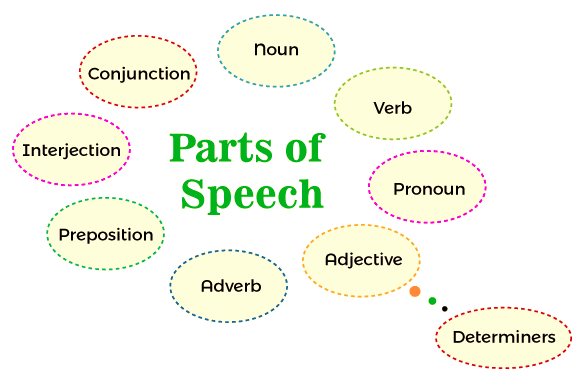
Figuring or Defining The Parts Of SpeechAt times, it might be difficult to evaluate which part of speech a word pertains to. Here are a few simple "hacks" for rapidly determining which section of speech you're working with:
And if you're ever at a loss for words, just look them up. In most dictionaries, the parts of speech the words belongs to is stated in its entrance, and if it belongs to more than one part of speech, all the forms are enlisted with example. 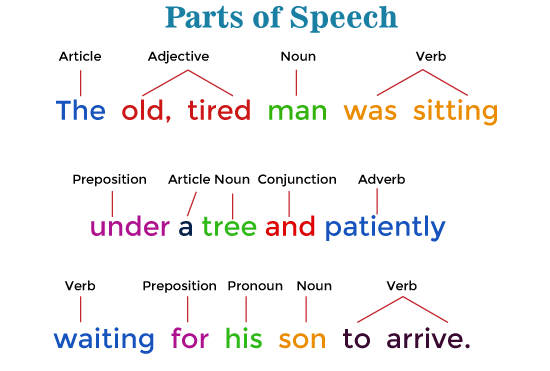
Here are a few questions you can ask about a specific word in a phrase to determine what part of speech it is.
This takes us to another major stumbling block for writers and language learners: When a term is used in 2 distinct ways of speakingPhrases are often one part of speech or sometimes other, just as Y is often a vowel and sometimes a consonant. Here are a few of such examples: Work I went to work (noun). I work in the open area(verb). I work in the open area(verb). Well She writes very well adverb). He is well-liked in his neighborhood (adjective). I tossed a dime into the well (noun). But I cooked lunch and dinner, but Dave cooked breakfast(conjunction). I purchased all the items but the pencils you requested for (preposition). Words can also develop to fit into newer parts of speech. The word "adult" is a recent example. The adult was largely a noun that refers to a fully grown individual before to the 2010s. It could also be utilized as an adjective to describe certain genres of medias, such as adult modern music. But then, at the turn of the decade, a brand-new verb, adulting, arrived in the internet vocabulary. Adulting, as a verb, refers to the act of performing activities such as paying bills and going food shopping.
Next TopicPresent Perfect Continuous Tense
|
 For Videos Join Our Youtube Channel: Join Now
For Videos Join Our Youtube Channel: Join Now
Feedback
- Send your Feedback to [email protected]
Help Others, Please Share










